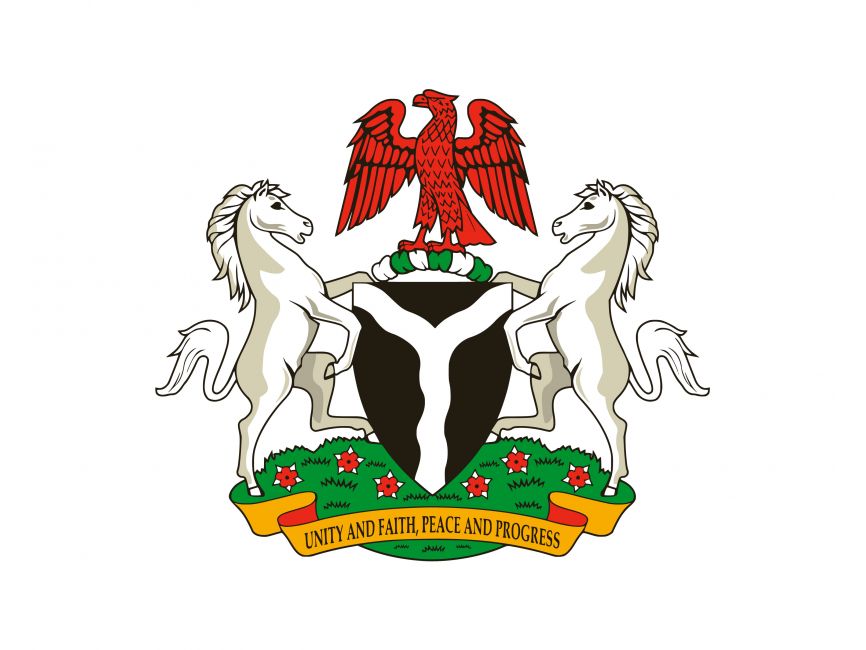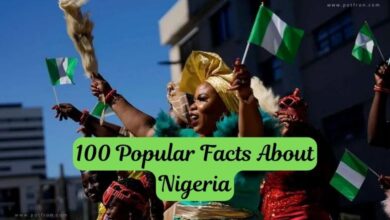
The Nigerian coat of arms is a symbol of the country’s sovereignty, unity, and strength. It was officially adopted on May 20, 1960, shortly before Nigeria gained independence from British colonial rule on October 1, 1960. The coat of arms consists of several components, each with its own significance:

| Adopted | 20 May 1960 |
| Crest | An eagle displayed Gules |
| Shield | Sable a Pall wavy argent |
| Supporters | Two horses Argent |
| Torse | Argent and Vert |
| Motto | Unity and Faith, Peace and Progress |
Nigeria Coat of Arms And its Full Meaning
1. Black Shield: The shield represents Nigeria’s fertile soil and its rich agricultural heritage. It symbolizes the ability of the nation to feed itself and the rest of Africa.
2. Wavy Bands: These bands of white and green symbolize the rivers Niger and Benue, the main rivers in Nigeria. They also represent unity and peace, with green signifying fertile land and the country’s agricultural resources, while white represents peace and unity.
3. Coil of Rope: The rope around the shield represents the bond of unity among Nigeria’s diverse people, as well as the country’s commitment to strive together for progress and development.
4. Eagle: The eagle atop the shield is a symbol of strength and the nation’s ability to rise above challenges. It also represents pride and dignity.
5. National Motto: “Unity and Faith, Peace and Progress” is inscribed on a ribbon below the coat of arms. This motto emphasizes the importance of unity, faith, peace, and progress in Nigeria’s development as a nation.
6. Floral Supporter: On each side of the shield are two green and white floral symbols. These are the Coctus Spectabilis, Nigeria’s national flower. They are a representation of the beauty and resilience of the Nigerian people.
Related: List of Nigeria Past Presidents
Related: Nigeria Postal Codes and Zip Codes Complete list
Related: Nigeria National Anthem and Its Frequently Aked Questions
A Brief History About the Nigeria Coat of Arms
The need for the Nigeria identity started during the pre-independence era when Nigeria was still a British colony. In the early 20th century, Nigeria was under British rule, and like many other colonies, it did not have its own distinct national symbols.
As Nigeria’s struggle for independence gained momentum in the mid-20th century, discussions about national identity and symbols became more prominent. It was during this time that the need for a unique emblem to represent the aspirations and values of the Nigerian people became apparent.
In 1960, Nigeria gained independence from British colonial rule. Following independence, there was a growing sense of national pride and a desire to establish symbols that reflected Nigeria’s sovereignty and unity as a nation.
By Mid 1960, the Nigerian government decided to create a national coat of arms to serve as the country’s identity. The task of designing the coat of arms was entrusted to a Nigerian artist named Michael Taiwo Akinkunmi. Akinkunmi’s design was chosen out of several submissions, and it was officially adopted on 20 may 1960.




